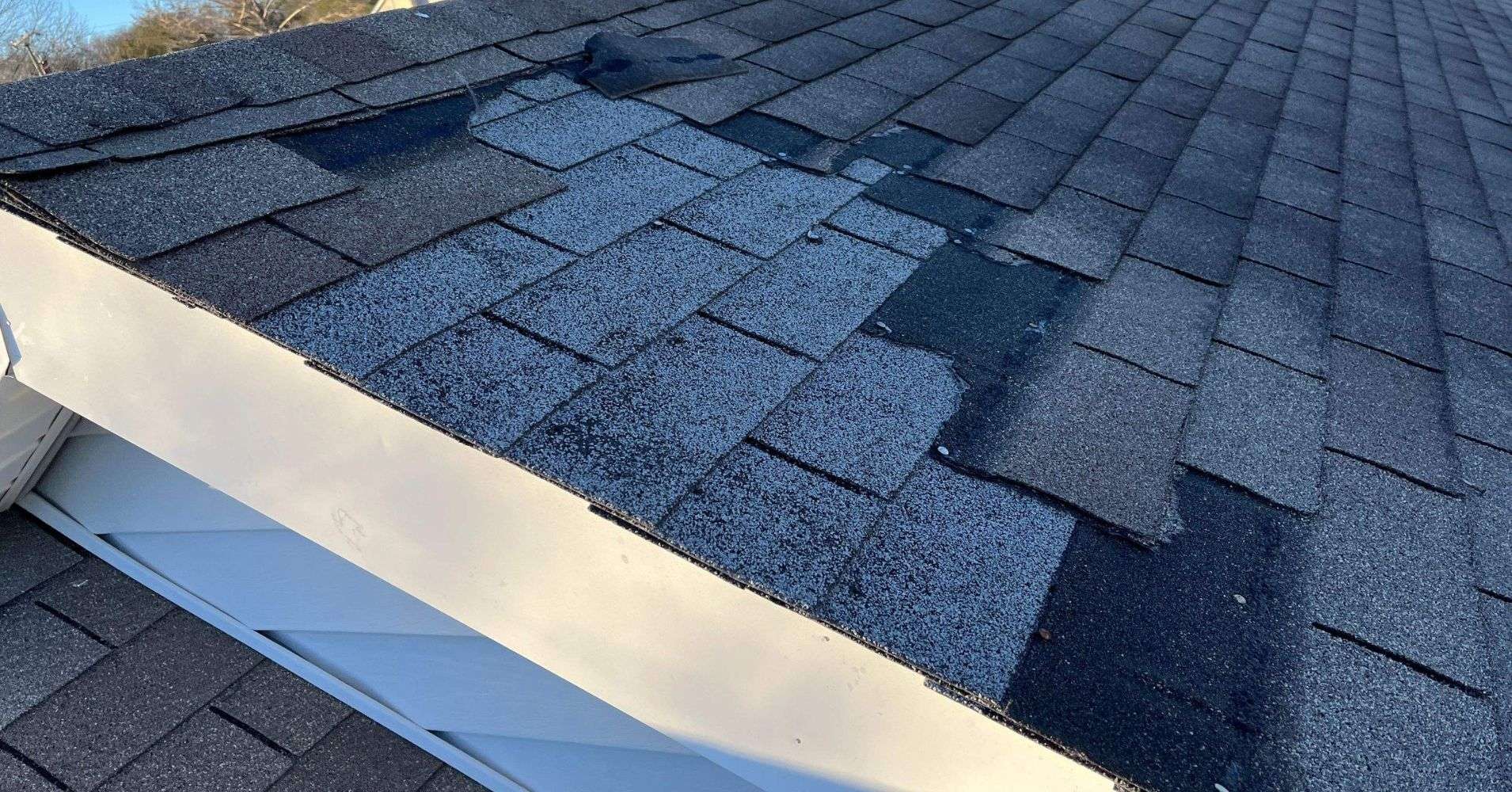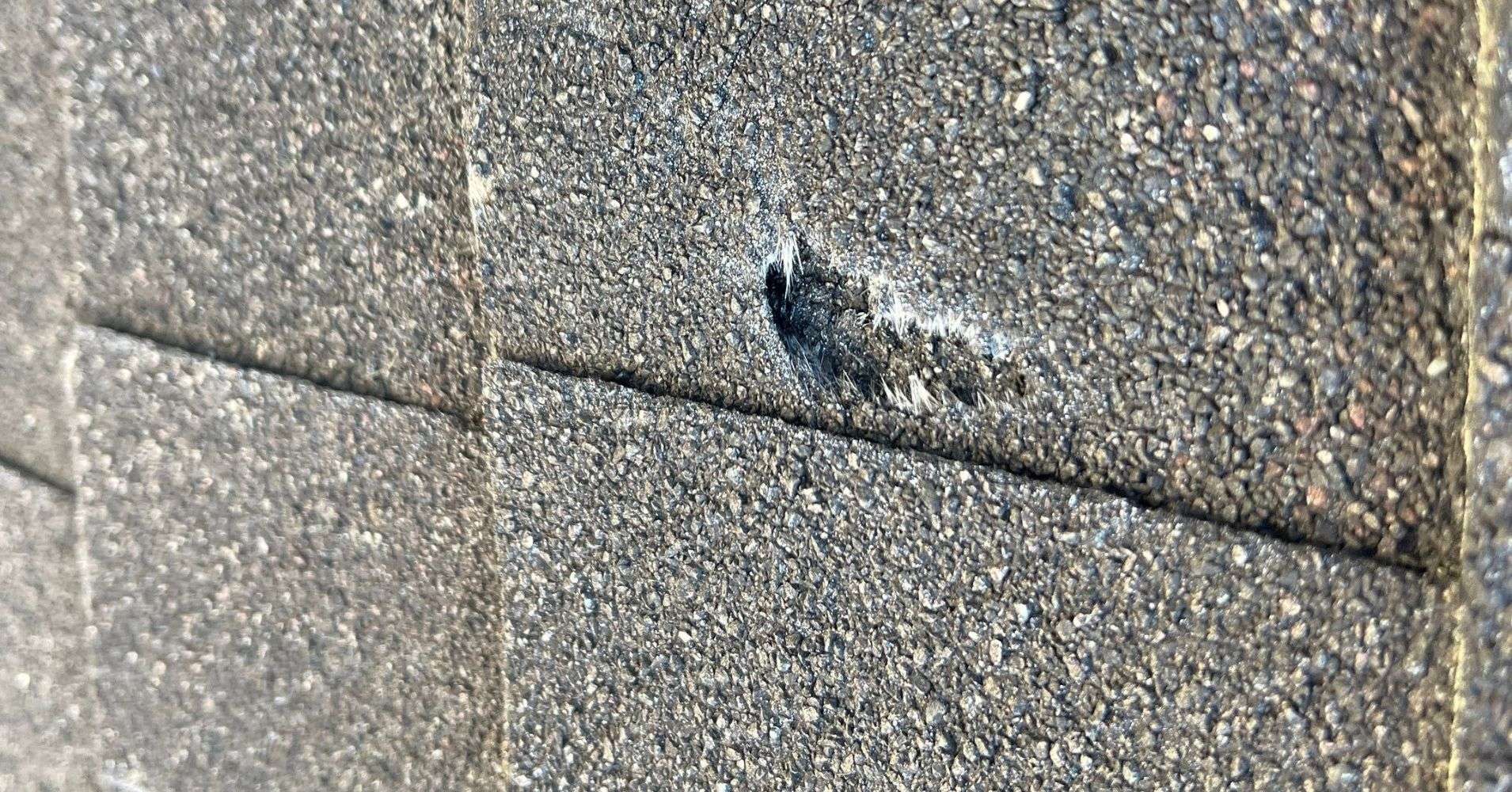SUMMER STORMS 101: Everything You Need to KNOW
When the weather starts heating up and the summer storms start rolling in. It’s important to be prepared for when these storms hit, especially if you live in an area that is prone to severe weather. One of the most common forms of storm damage is roofing damage.
This blog covers common roofing damage from summer storms and tips to handle it.
TYPICAL DAMAGE OF SUMMER STORMS
Throughout the South, summer storms are a common occurrence. If you’re a homeowner they also can mean damage to your roof and throughout your home. Keep in mind that different elements of summer storms can affect your roof differently and leave clues of damage.

WIND DAMAGE:
Storms can bring high winds that lead to downed trees and limbs, creating significant hazards. These falling objects can cause damage to your roof, gutter system, and windows, potentially leading to costly repairs. More importantly, high winds can cause shingles to blow off or crease throughout the roof. Compromised shingles put your roof at risk, leading to leaks, water damage, and structural integrity issues.
HAIL DAMAGE:
Storms can produce hail, leading to significant roofing damage. Hailstones vary in size, ranging from small pellets to large stones, and can form even in warm months due to strong updrafts in thunderstorms. These updrafts carry water droplets upward, where they freeze and accumulate ice layers before falling as hail.
Some hail melts quickly and causes no harm, but larger hailstones can damage property and injure people. It’s important to stay aware of the potential for summer hail, especially in storm-prone areas.
FLOODING:
Another type of damage caused by summer storms is flooding. Floodwaters can enter your home through cracks or openings, causing structural damage and harming your belongings. The added moisture can also promote mold and algae growth in your roofing structure, attic, and beyond.
LIGHTNING:
While it’s not as common, summer storms can also bring lightning. This can be especially dangerous if your home is struck by lightning. Lightning strikes can cause fires that can destroy your home and put your family at risk.
Signs of Roofing Damage

MISSING OR DAMAGE SHINGLES:
Look for missing or damaged shingles, as they are prone to wind and hail damage, which can cause leaks and structural issues. Signs of wear include curling, cracking, or granules in gutters, indicating the roofing materials are breaking down (aka degranulation). Loose shingles are easily dislodged by strong winds and should be fixed by a professional to avoid bigger damage.
GUTTER DAMAGE:
Falling or hanging gutters are common indicators of summer storm damage. Strong winds can dislodge gutters, while hail can knock them loose or leave impact marks, potentially causing leaks in the roof or home interior. Additionally, summer storms often deposit debris in the gutters, and this extra weight can strain and damage their structure. Granule loss from asphalt shingles can add extra weight to the gutters, contributing to the issue.
WATER STAINS:
Water stains on your ceiling or walls are a clear sign of roof damage and need immediate attention. They could also indicate flooding, so it’s important to have them checked by a professional as soon as possible.
SAGGING ROOF:
A sagging roof often points to structural damage, usually from water-damaged sheathing or poor ventilation. Hail-damaged shingles or fascia can expose your roof to moisture, leading to sagging over time. This weakens the roof structure and could indicate deeper problems. If you notice sagging, have an expert inspect your roof right away.
DEBRIS ON ROOF:
After a storm, debris like tree limbs or pieces of shingles may be on your roof. Remove it promptly to prevent further damage.
FASCIA DAMAGE:
The fascia around your roof’s edge can also be affected by hail. Cracked, chipped, or discolored paint could mean it’s been damaged and needs attention.
HOW TO PREVENT DAMAGE NEXT TIME

Now that you know how to handle summer storm roof damage, you can take steps to prevent it in the future.
CHECK YOUR CEILING, ATTICS, AND CRAWL SPACES
The first step in protecting your roof against summer storms is to check the interior of your home. This includes checking any ceiling, attics, and crawl spaces for any signs of water damage or issues with the roof. Signs of potential issues include:
• Mold or mildew signs.
• Light shining through in the attic
• Water spots in the ceiling.
These issues mean that water is getting through your roofing shingles or underlayment and is damaging your home structure. If you notice something off, it means you’re vulnerable to summer storms and need professional help.
CLEAN YOUR GUTTERS & DOWNSPOUTS:
Regular gutter cleanings are essential to keep your home’s drainage system working properly. Debris buildup can block water flow, leading to roof, wall, and foundation damage.
Clogged gutters can also weigh down your home’s structure, potentially damaging the fascia, especially during summer storms.
Clean your gutters at least twice a year, or more often in areas with lots of trees or heavy rainfall. While cleaning, check for any damage. If you find any, contact a roofing company to handle repairs. Regular maintenance can help you avoid a more expensive gutter replacement in the future.
TRIM OVERHANGING BRANCHES:
Overhanging branches can pose a risk to your roof. Strong winds and heavy rain can break branches, causing roof damage or even endangering your family.
Trimming these branches reduces risks and promotes healthier tree growth. It’s best to hire a professional to handle this safely and effectively. A little preventative care can go a long way in protecting your home.
SECURE OUTDOOR FURNITURE:
Strong winds during summer storms can toss around patio furniture and outdoor items. To avoid this, secure furniture to the ground or bring it indoors during storms.
DOES HOMEOWNERS INSURANCE POLICIES COVER SUMMER STORM DAMAGE?
If your home is damaged in a summer storm, your homeowners’ insurance may provide coverage depending on your policy. To know what’s covered, review your policy carefully.
Most policies cover repairs for accidental physical damage caused by storms or natural disasters, though limits may apply. If your home is hit by hail, wind, or flooding, call a professional roofing contractor for a thorough inspection. They can determine if you’re eligible for a roofing insurance claim.
WHY SUMMER IS THE BEST TIME FOR A ROOF REPLACEMENT
Summer is perfect for home renovation projects, and replacing your roof offers big benefits. From cost savings to better installation conditions, here’s why a summer roof replacement is ideal:
COST SAVINGS
Roof repair or replacement is often cheaper in summer due to competitive pricing from contractors and suppliers.
BETTER WEATHER CONDITIONS
Summer weather, with less rain and humidity, makes roof installations smoother and less prone to interruptions.
FASTER COMPLETION
Summer projects face fewer delays from bad weather, allowing for quicker completion. Permits can also be easier to obtain during this time.
FLEXIBLE SCHEDULING
Longer daylight hours allow roofing contractors to complete more projects quickly. Many small homes can have a roof replaced in just a day.
AVOID THE FALL RUSH
By replacing your roof in summer, you can avoid delays caused by the busy fall and winter seasons when demand for roofing services spikes.
FIX WATER DAMAGE BEFORE WINTER
If your roof has leaks or water damage, summer is the best time to fix it. This prevents the issue from worsening during harsh winter weather.
READY FOR SUMMER STORMS? BOOK AN INSPECTION TODAY!
To keep your roof in shape, regular maintenance is key. Clean gutters, check for missing shingles, and trim overhanging branches to prevent damage. The most important step? Hire a professional roofing contractor for an inspection.
Many companies offer FREE inspections to assess your roof and suggest solutions to handle summer weather. If your roof is already damaged, act fast. Whether you need repairs, a replacement, or help with insurance claims, professional assistance is crucial.
For Tennessee residents, Roof MD is here to help. We offer FREE Roof Inspections and can guide you through every step to keep your roof in great condition. Contact us today!
